By Alex Trukan
There are many types of movements off the ball that full backs try – overlaps, underlaps, third man runs. In many situations, however, these movements don’t lead to full backs getting on the ball. Rather than that, these are often used to create space for other players and unbalance the opposition defensive block. Getting full back into possession of the ball in wide areas may lead to many advantages – cross, pass into the penalty box, through ball or a shot. To do it successfully, however, a whole team effort is required. Especially movements off the ball made by midfielders are crucial. These not only prepare the space for full back to exploit but also help in getting the ball into him quickly and efficiently. This article will explore how midfielders’ movements off the ball lead to getting full backs in possession of the ball.
When the team is attacking through the thirds, midfielders should be aware where the full backs are. This will allow them to adjust their positions and decide when to distribute the ball. Constant scanning and planning characterises best players in the game. Below, it can be seen how Luka Modric observes where is the right back before trying to get on the ball. Players should scan in three main situations – when they think they might get on the ball (before pass is made), when they know they will get on the ball (as the ball is played) and when they are on the ball.
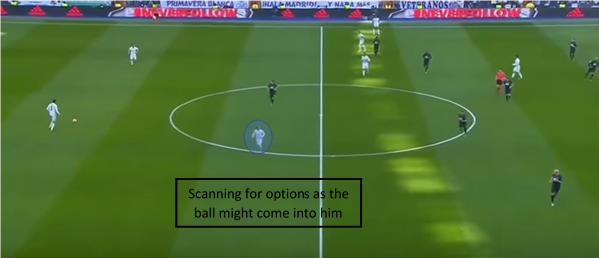
As the ball is played across centre backs, central midfielders can make a movement to drop on the outside of the centre back in possession. This will allow full back to push up higher. Centre midfielder that dropped in between might act as a link player to get full back on the ball. If the ball is played directly from centre back into full back, central midfielder might be looking to support him from behind.
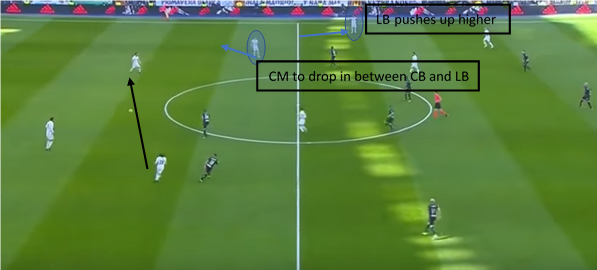
Another type of midfield movement occurs as wide midfielder comes towards the ball and at the same time drags opposition wide midfielder centrally. This creates space out wide and allows the ball to be played quickly into full back. Wall pass combinations with wide midfielder can be encouraged.
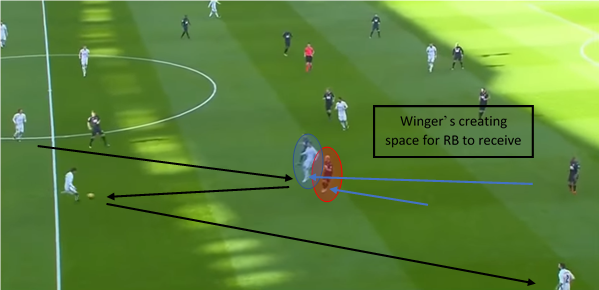
More attacking minded option is trying to play the ball into full back making a run in behind the back line. Before a pass is made, central midfielder would be looking to make a movement towards the ball, at the same time dragging opposition midfield higher up the pitch and isolating their back line. Timing of the run is crucial to avoid off side. Strikers would be looking to stay in line with opposition defenders and support full back by making forward runs into the penalty box.
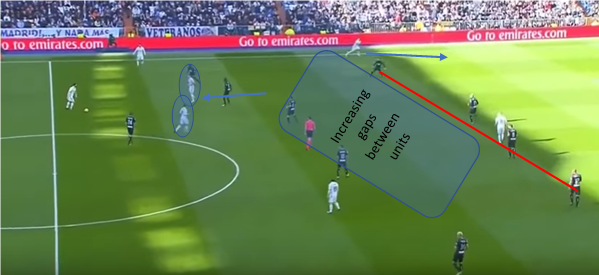
If playing through one wing is not possible, midfielders should be ready to switch play and get opposite full back on the ball. In this situation, movement towards own goal may be required to create a passing angle and receive the ball from wide area.
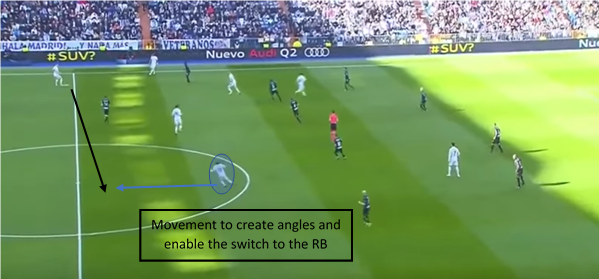
The quicker those passes are made, the more space will be available for the full back on the opposite side. The rest of the midfielders might choose to stay away from the ball and not to move with its’ movement. This is more direct option which isolates full back and encourages more direct option with him driving forwards and creating chances in and around the box.
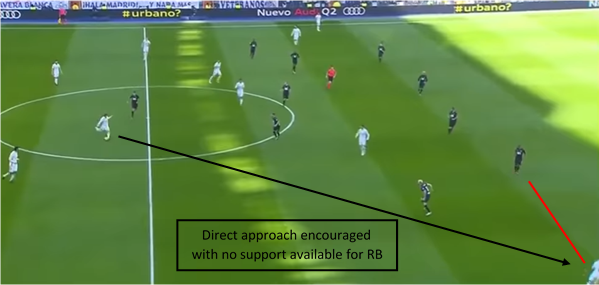
When a quick switch of play is made, another option is to provide support for full back. In this case, one of the midfielders would make a movement towards wide area or stay there already when the ball is on the opposite side. This type of movement encourages combination play and provides an option to recycle the ball again through the other side.
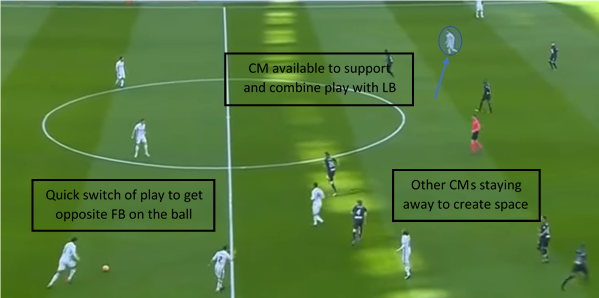
Whenever trying to involve full backs in attacks, it is important to not fall into a trap of playing wide for the sake of playing wide. Players should remember and consider as a priority an option to play centrally and forwards as soon as possible. When coaching players to get full backs on the ball, successful teams should master at least couple of different variations to offer solutions to various problems opposition might pose.
By Alex Trukan, Development Coach, Nottingham Forest
@AlexTrukan


